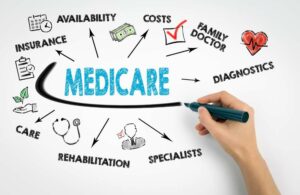Against the backdrop of an unrelenting senior opioid crisis, 2 brand-new federal government reports alert that America’s seniors are catching the pitfalls of prescription pain relievers.
Issued by the Agency for Healthcare Research and Quality (AHRQ), the reports expose that millions of older Americans are now filling prescriptions for various opioid medications and at the very same time, thousands of those older Americans are winding up in the medical facility with opioid-related complications.
“These reports underscore the growing and under-recognized concerns with opioid usage disorder in older populations, including those who struggle with persistent discomfort and are at danger for adverse events from opioids,” stated Dr. Arlene Bierman. She is the director of AHRQ’s Center for Evidence and Practice.
To cope, lots of seniors take opioids, which undoubtedly raises the risk of negative effects and negative drug interactions.
The senior opioid crisis reports bring many questions to the table for seniors.
Bierman was part of a team that focused on trends concerning opioid-related hospitalizations  and emergency department visits among U.S. seniors. Bierman and her associates pointed out that chronic pain is common among seniors, as eight in ten battle with several health conditions, consisting of heart illness, diabetes, arthritis, and anxiety. The difficulty, stated Bierman, “is safe-prescribing for those who require opioids for pain while preventing overuse or misuse.”
and emergency department visits among U.S. seniors. Bierman and her associates pointed out that chronic pain is common among seniors, as eight in ten battle with several health conditions, consisting of heart illness, diabetes, arthritis, and anxiety. The difficulty, stated Bierman, “is safe-prescribing for those who require opioids for pain while preventing overuse or misuse.”
At the exact same time, AHRQ’s second report discovered that almost 20 percent of seniors filled at least one opioid prescription between 2015 and 2016, equal to about 10 million seniors. And a more than 7 percent– or about 4 million seniors– filled prescriptions for four or more opioids, which was characterized as “frequent” use.
Some Are Surprised; Others Aren’t
Dr. Anita Everett is a primary medical officer for the United States Substance Abuse and Mental Health Services Administration (SAMHSA). She stated that the findings shouldn’t come as a surprise. Others say that the senior opioid crisis had been building for years now.
Clinicians, she encouraged, might attend to that issue “by utilizing non-opioid-discomfort medications and non-pharmacologic treatments before considering using opioids.” And she recommended that if opioids are required, “the most affordable possible dosage should be utilized.”
Likewise, AHRQ detectives found that opioid-related emergency situation visits among seniors soared by 74 percent, while non-opioid related emergency situation department visits just increased 17 percent.
2010 — 2015 Stats
In reality, the team found, opioid-driven complications were the cause for nearly 125,000 hospitalizations– and more than 36,000 emergency room attendees among seniors in 2015.
Opioid use likewise increased dramatically depending upon a person’s perceived health status. Just 9 percent of seniors in “outstanding” health filled out opioid prescriptions, compared with nearly 30 percent in “reasonable” health and 40 percent in “bad” health.
The report likewise discovered other disconcerting trends. Between 2010 and 2015, there was a 34 percent dive in the variety of opioid-related inpatient health center admissions among seniors, even as non-opioid-related inpatient hospitalizations come by 17 percent.
The company’s 2nd report evaluated opioid prescription patterns among older Americans. A great resource for this is Rehabaid’s interactive drug overdose map.
Regular usage was discovered to be notably more common among seniors who were either low-income or poor, guaranteed through Medicare or another type of public insurance, and/or residents of rural areas.
Do You Know About Medicare Supplement Insurance Plans?
Medigap will help pay some of the healthcare costs Original Medicare doesn’t cover.
















